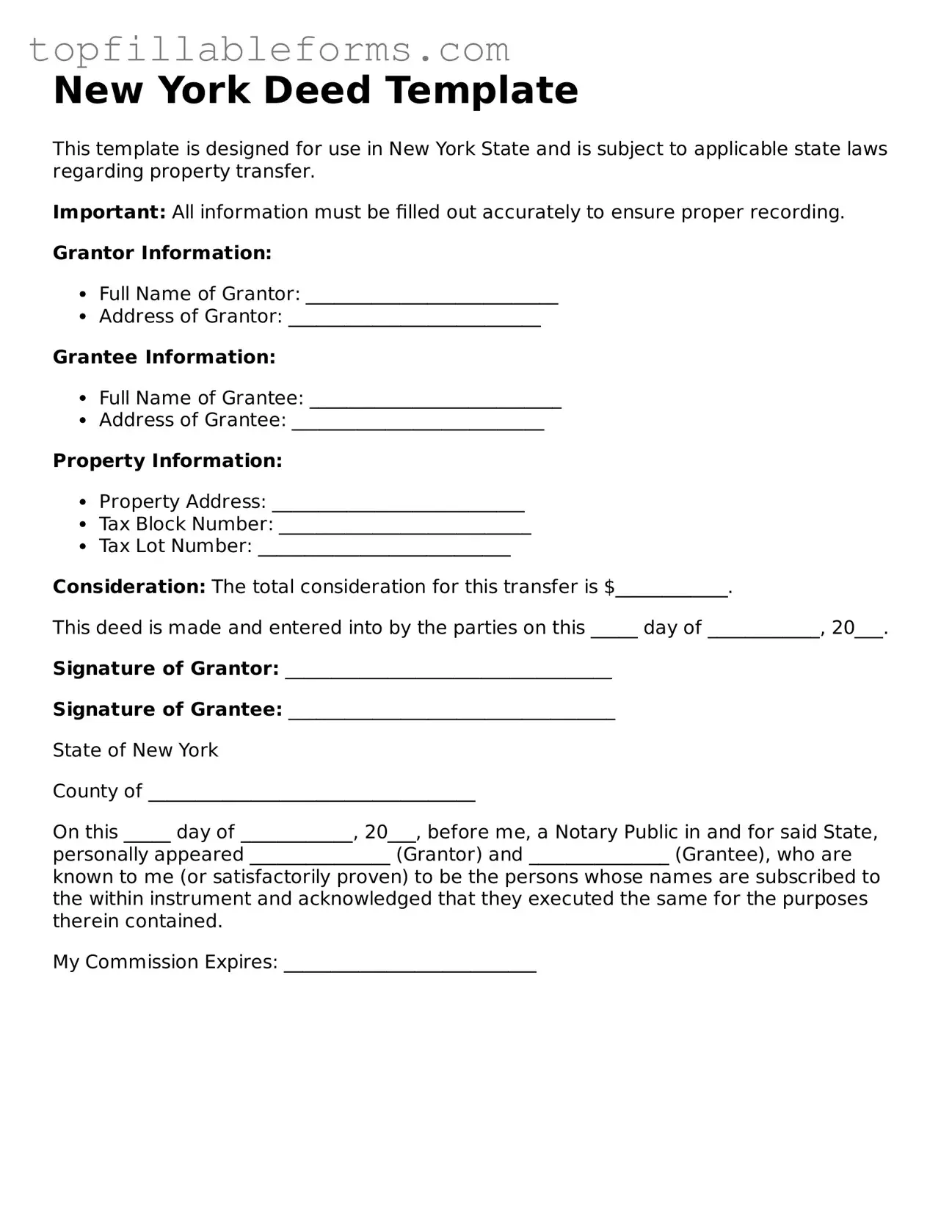New York Deed Template
This template is designed for use in New York State and is subject to applicable state laws regarding property transfer.
Important: All information must be filled out accurately to ensure proper recording.
Grantor Information:
- Full Name of Grantor: ___________________________
- Address of Grantor: ___________________________
Grantee Information:
- Full Name of Grantee: ___________________________
- Address of Grantee: ___________________________
Property Information:
- Property Address: ___________________________
- Tax Block Number: ___________________________
- Tax Lot Number: ___________________________
Consideration: The total consideration for this transfer is $____________.
This deed is made and entered into by the parties on this _____ day of ____________, 20___.
Signature of Grantor: ___________________________________
Signature of Grantee: ___________________________________
State of New York
County of ___________________________________
On this _____ day of ____________, 20___, before me, a Notary Public in and for said State, personally appeared _______________ (Grantor) and _______________ (Grantee), who are known to me (or satisfactorily proven) to be the persons whose names are subscribed to the within instrument and acknowledged that they executed the same for the purposes therein contained.
My Commission Expires: ___________________________
